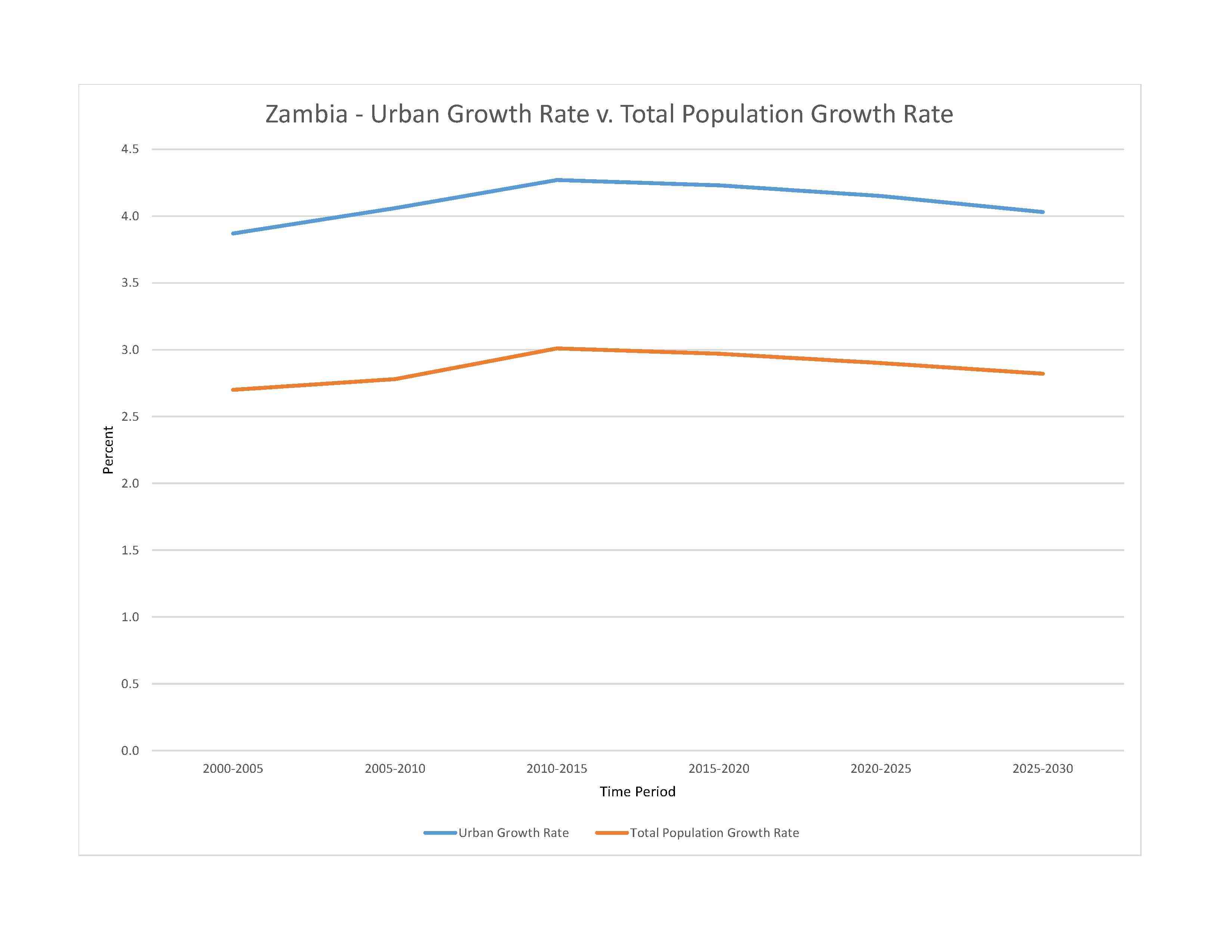
air pollution and resulting acid rain in the mineral extraction and refining region; chemical runoff into watersheds; loss of biodiversity; poaching seriously threatens rhinoceros, elephant, antelope, and large cat populations; deforestation; soil erosion; desertification; lack of adequate water treatment presents human health risks
party to: Biodiversity, Climate Change, Climate Change-Kyoto Protocol, Climate Change-Paris Agreement, Comprehensive Nuclear Test Ban, Desertification, Endangered Species, Hazardous Wastes, Law of the Sea, Nuclear Test Ban, Ozone Layer Protection, Wetlands
signed, but not ratified: none of the selected agreements
tropical; modified by altitude; rainy season (October to April)
agricultural land: 31.7% (2018 est.)
arable land: 4.8% (2018 est.)
permanent crops: 0% (2018 est.)
permanent pasture: 26.9% (2018 est.)
forest: 66.3% (2018 est.)
other: 2% (2018 est.)
urban population: 46.3% of total population (2023)
rate of urbanization: 4.15% annual rate of change (2020-25 est.)

severe localized food insecurity:due to reduced incomes and localized shortfalls in cereal production - cereal production declined to a below‑average level in 2022 and along with the impact of rising food prices, the number of food insecure is foreseen to increase at the end of 2022 to levels above the 1.6 million people estimated in the first quarter of 2022 (2022)
4.45% of GDP (2018 est.)
0.04% of GDP (2018 est.)
particulate matter emissions: 16.9 micrograms per cubic meter (2019 est.)
carbon dioxide emissions: 5.14 megatons (2016 est.)
methane emissions: 14.1 megatons (2020 est.)
municipal solid waste generated annually: 2,608,268 tons (2002 est.)
fresh water lake(s): Lake Tanganyika (shared with Democratic Republic of Congo, Tanzania, and Burundi) - 32,000 sq km; Lake Mweru (shared with Democratic Republic of Congo) - 4,350 sq km; Lake Bangweulu - 4,000-15,000 sq km seasonal variation
Congo river source (shared with Angola, Republic of Congo, and Democratic Republic of Congo [m]) - 4,700 km; Zambezi river source (shared with Angola, Namibia, Botswana, Zimbabwe, and Mozambique [m]) - 2,740 km
note – [s] after country name indicates river source; [m] after country name indicates river mouth
Atlantic Ocean drainage: Congo (3,730,881 sq km)
Indian Ocean drainage: Zambezi (1,332,412 sq km)
Upper Kalahari-Cuvelai-Upper Zambezi Basin
municipal: 290 million cubic meters (2020 est.)
industrial: 130 million cubic meters (2020 est.)
agricultural: 1.15 billion cubic meters (2020 est.)
104.8 billion cubic meters (2020 est.)
NOTE: The information regarding Zambia on this page is re-published from the 2024 World Fact Book of the United States Central Intelligence Agency and other sources. No claims are made regarding the accuracy of Zambia 2024 information contained here. All suggestions for corrections of any errors about Zambia 2024 should be addressed to the CIA or the source cited on each page.
This page was last modified 04 May 24, Copyright © 2024 ITA all rights reserved.